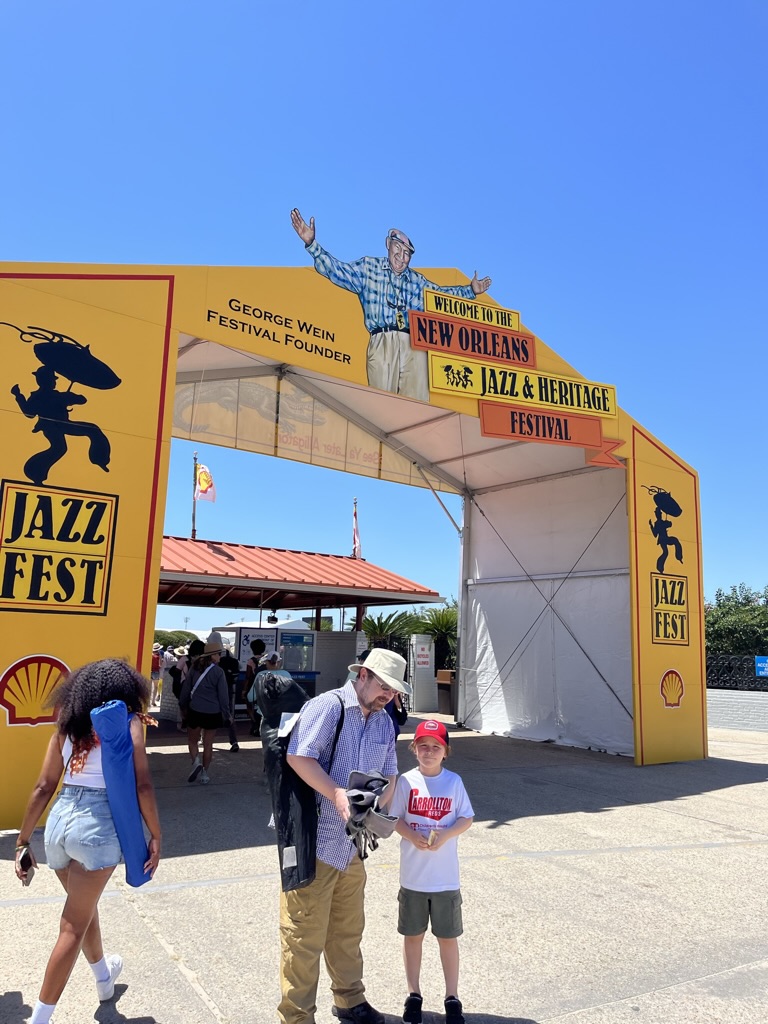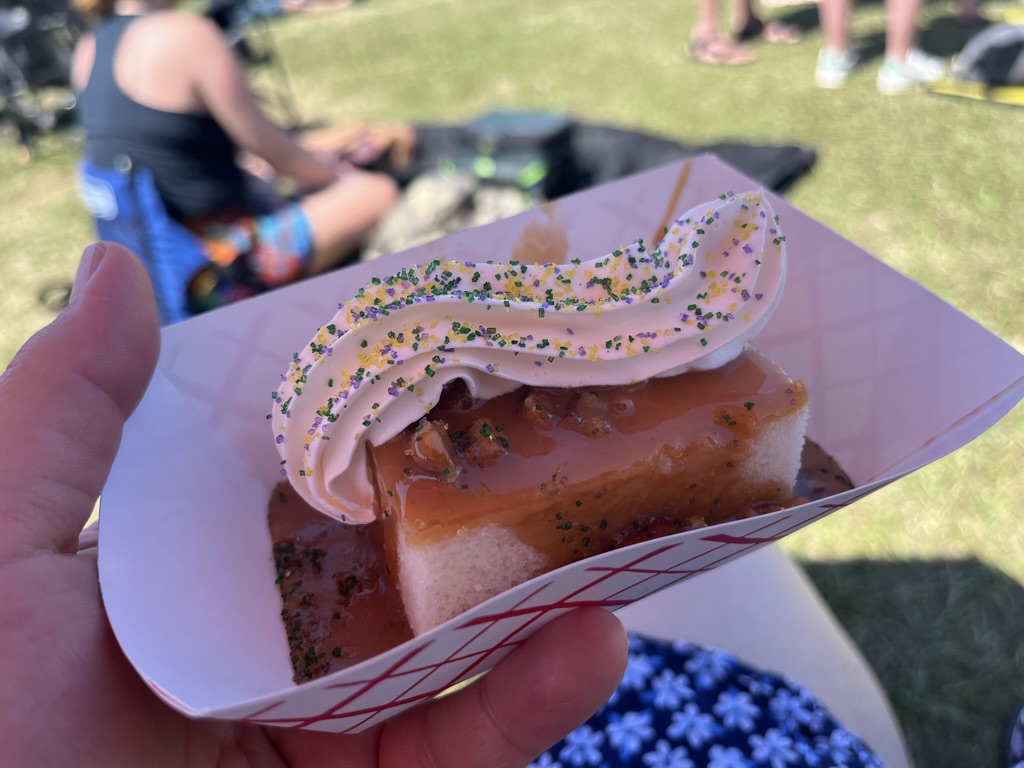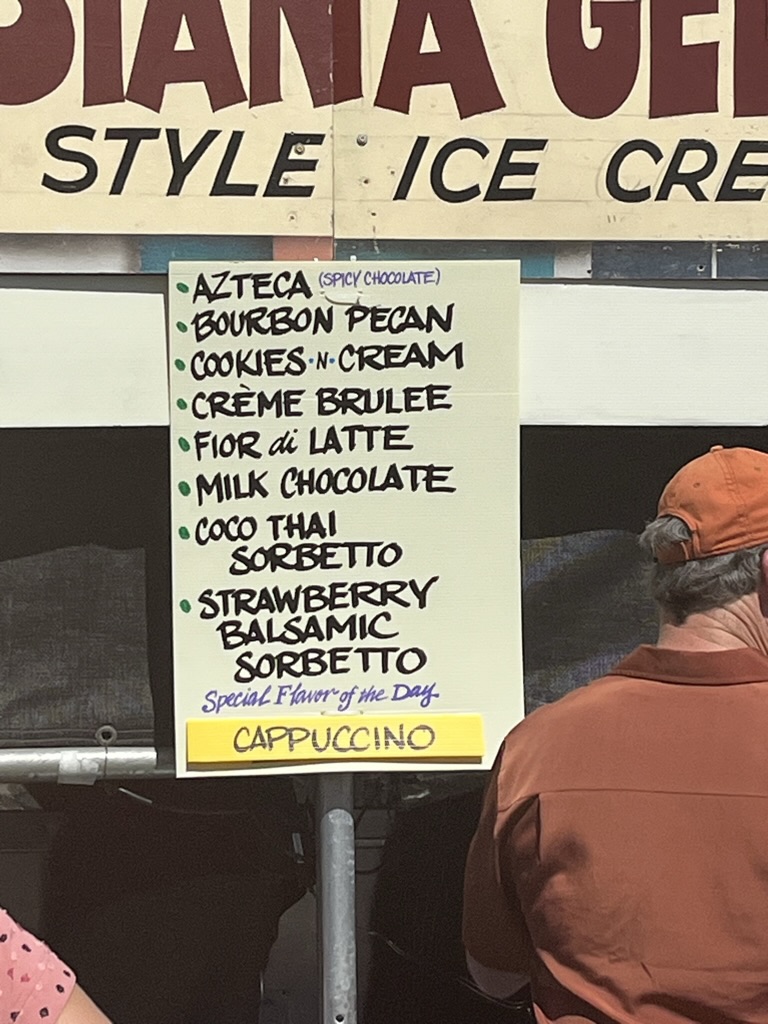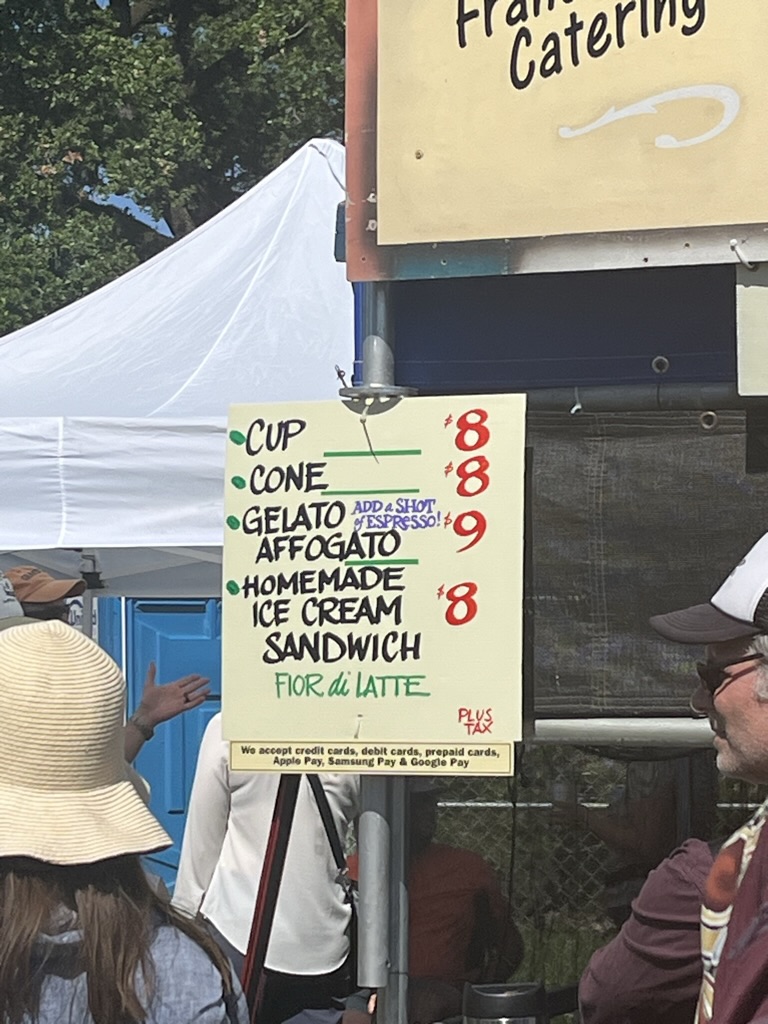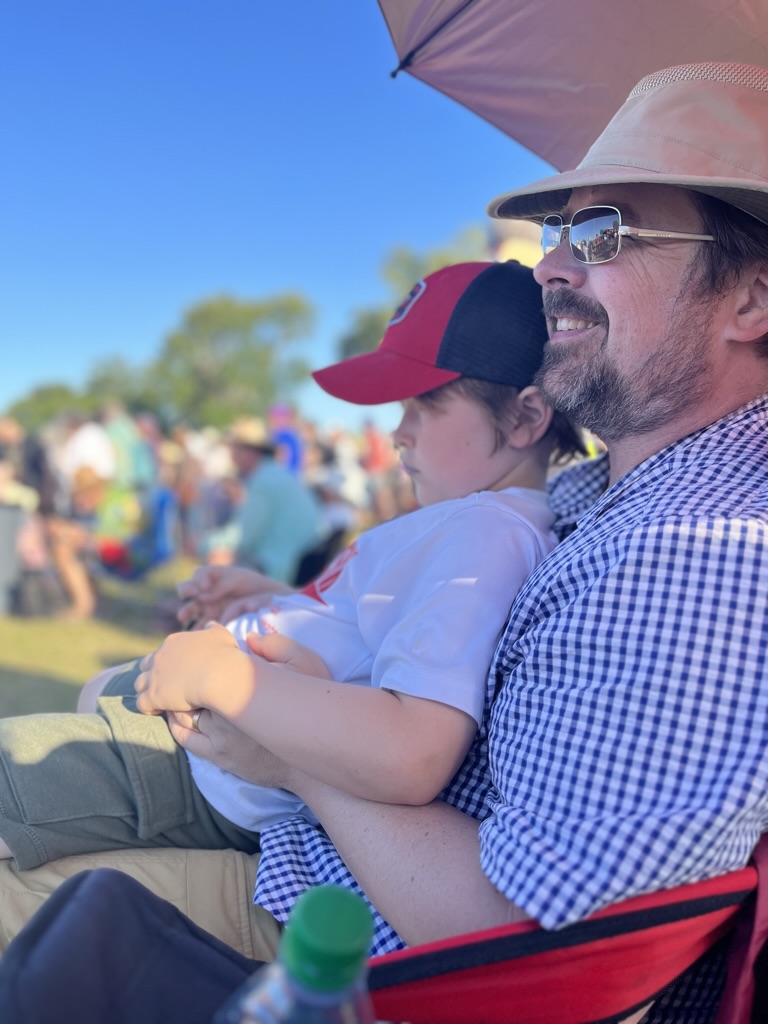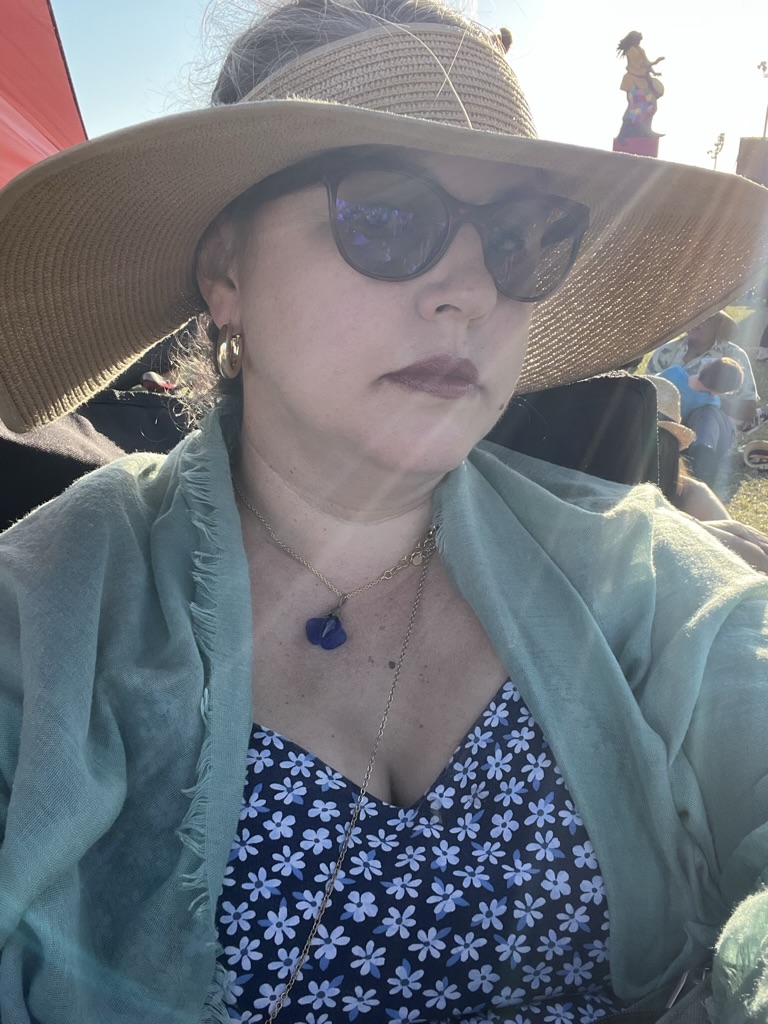Jazz Festing
We went to jazz fest last Sunday. We brought camp chairs this time and parked at the Fais Do Do stage all day. Jazz Fest is set up at the 145 acre racetrack and fairgrounds, with over a dozen stages and tents hosting acts simultaneously. The Fais Do Do area is where the zydeco and folk bands play – not a main stage, but just where we wanted to be to catch Los Lobos in the evening. Along with all the other middle aged white people. (All the Black people went to the much hipper Jill Scott, on a main stage, which I floated toward for a bit and man was that a show.)
Tickets for adults (everyone over 10) are about $90 a day. Tickets for children (9 and under) are $5. So guess which one of our children we brought with us?
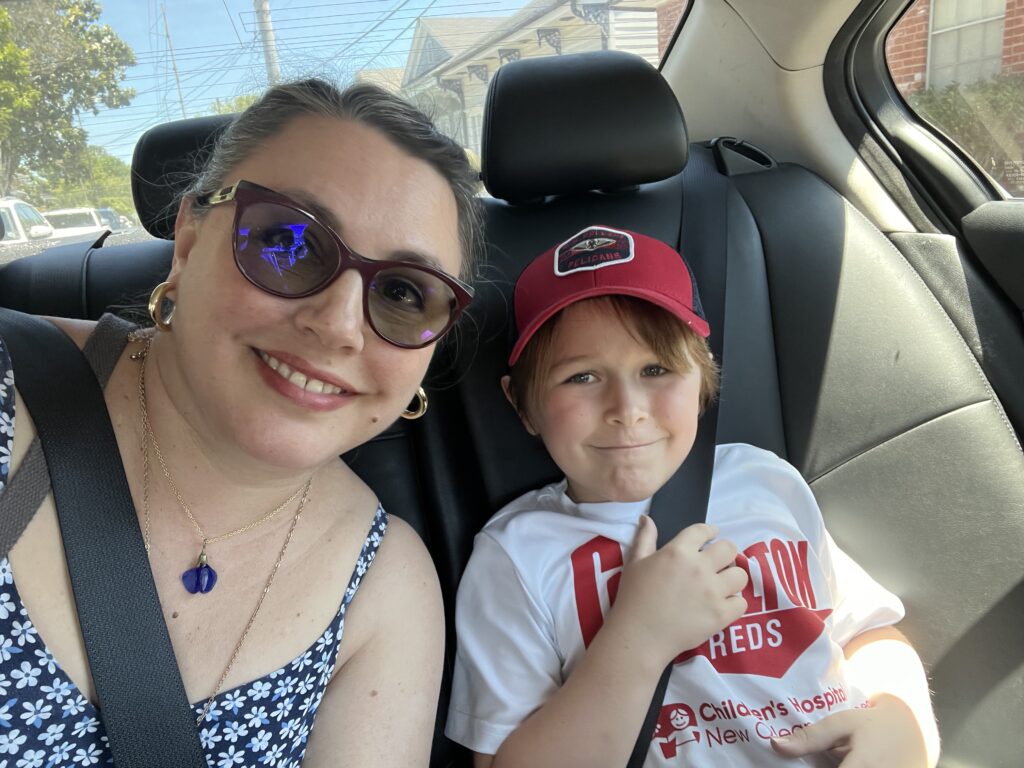
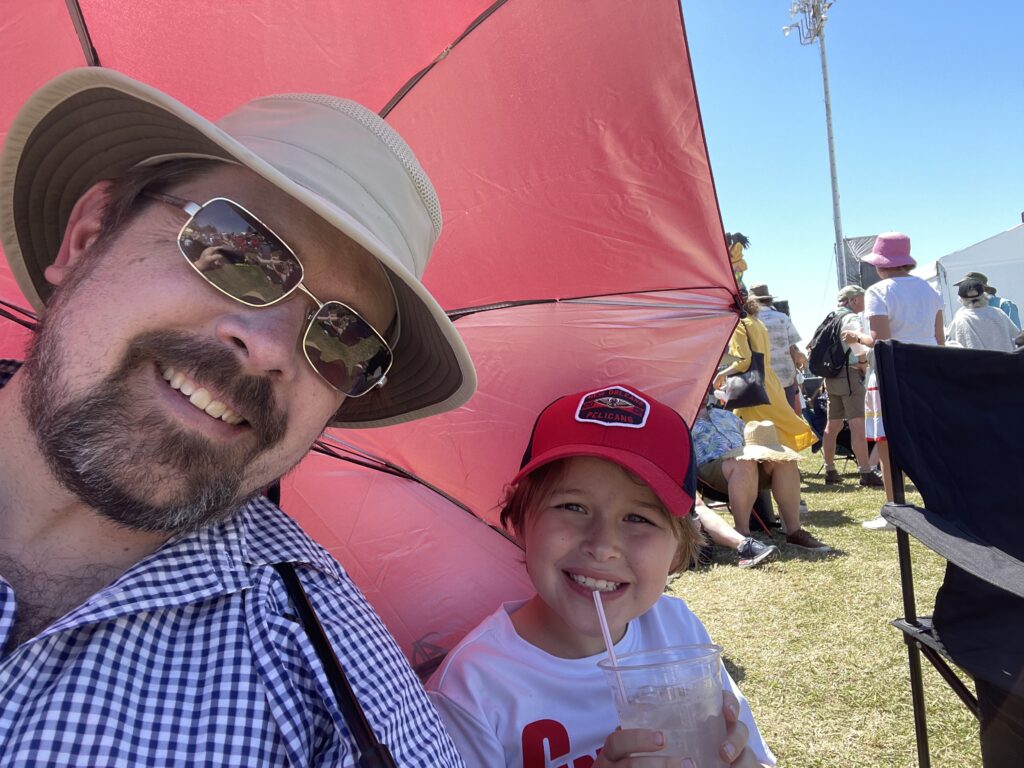
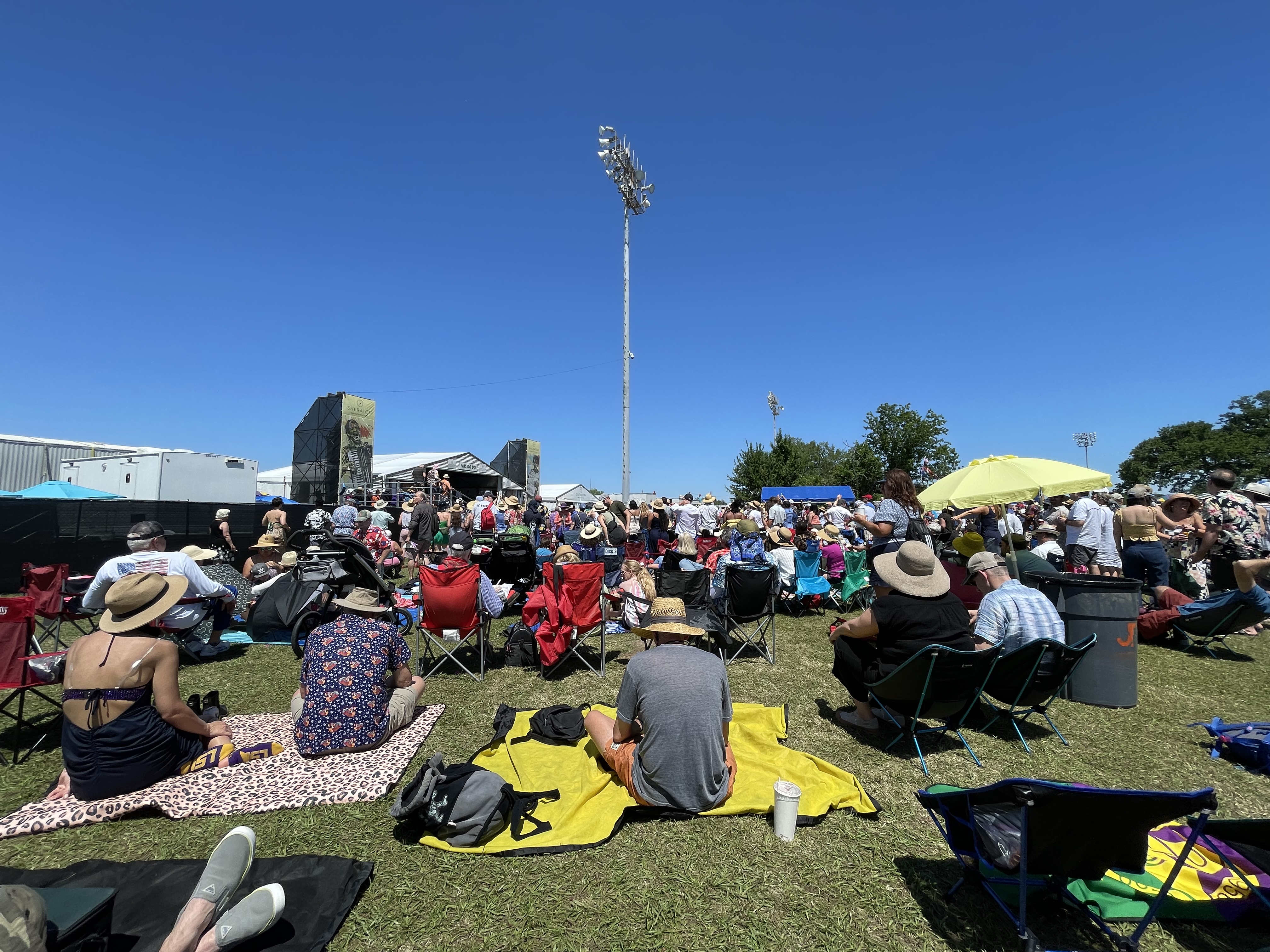
As I mentioned, the fest is set on 145 acres, and yet somehow we ended up (without realizing at first) sitting right next to Craiggy’s best friend from his third grade class. So off he went to toss a ball with them in a small open area near the fence, and the Prof and I took turns taking walks around the fair grounds and buying snacks and looking at the art and people watching. At one point, I came across a second line of Mardi Gras Indians.
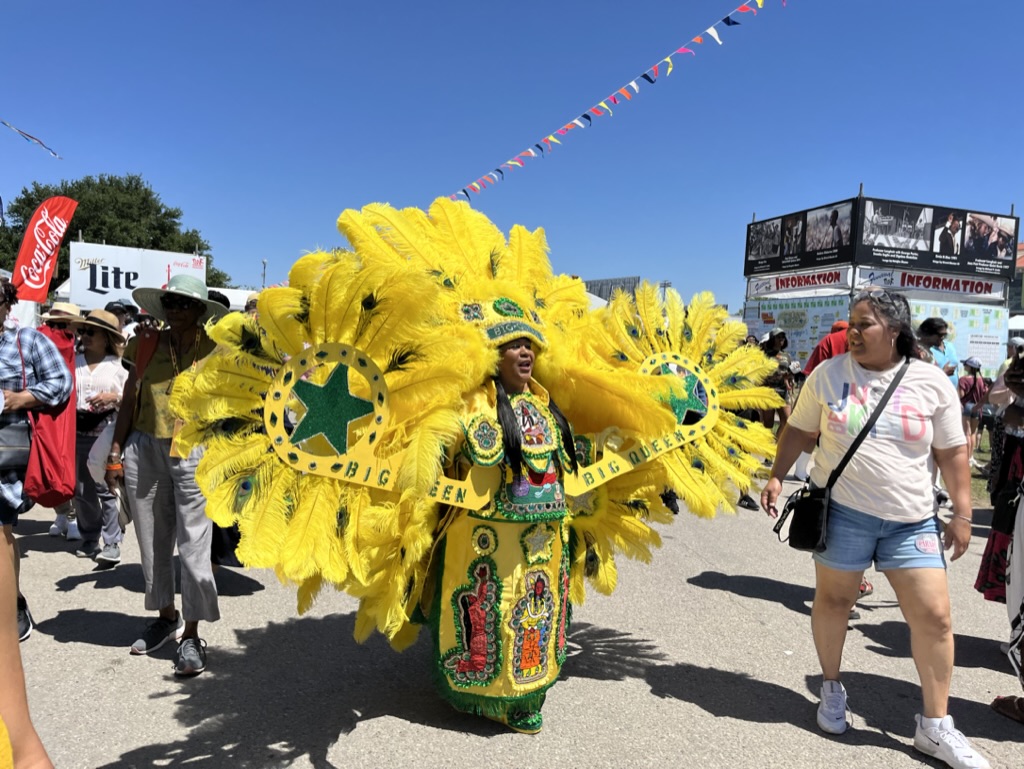
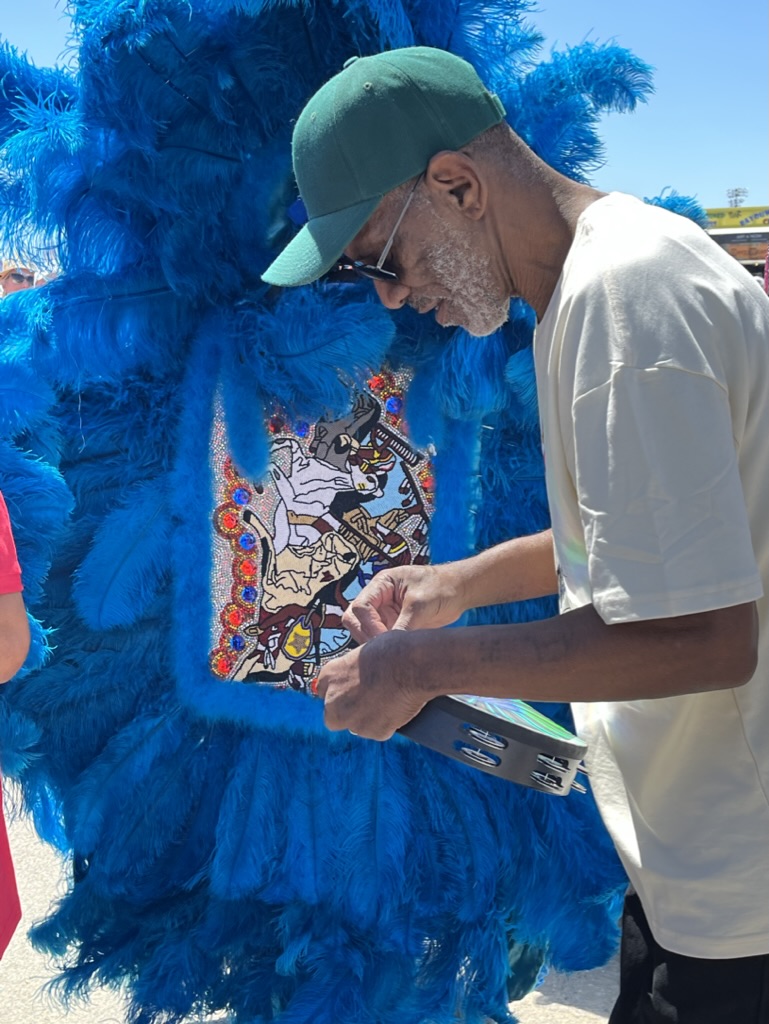
Below info from this website:
The Mardi Gras Indians are comprised, in large part, of the African-American communities of New Orleans’s inner city. While these Indians have paraded for well over a century, their parade is perhaps the least recognized Mardi Gras tradition. “Mardi Gras Indians–the parade most white people don’t see. The ceremonial procession is loose, the parade is not scheduled for a particular time or route…that is up to the Big Chief.” – Larry Bannock. Traditional Mardi Gras organizations form a “krewe.” A krewe often names their parade after a particular Roman or Greek mythological hero or god. The ranking structure of a Mardi Gras Krewe is a parody of royalty: King, Queen, Dukes, Knights, and Captains, or some variation of that theme. Many of the more established krewes allow membership by invitation only. Few in the ghetto felt they could ever participate in the typical New Orleans parade. Historically, slavery and racism were at the root of this cultural separation. The black neighborhoods in New Orleans gradually developed their own style of celebrating Mardi Gras. Their krewes are named for imaginary Indian tribes according to the streets of their ward or gang. The Mardi Gras Indians named themselves after native Indians to pay them respect for their assistance in escaping the tyranny of slavery. It was often local Indians who accepted slaves into their society when they made a break for freedom. They have never forgotten this support.
Jazz Fest is as famous for its food as for its music. We tried “Key Cake” (named after its creator, an up-and-coming baker named Keyala), I had duck and shrimp pasta, Craiggy boy got lemonade and fried chicken plus a huge homemade ice cream sandwich plus a giant blue snoball. We adults had a couple of beers apiece, and at one point I napped in my chair while Craig and the Prof went over to the children’s tent to check it out. It was a lazy, lovely, sleepy, not-too-hot, relaxed day.
